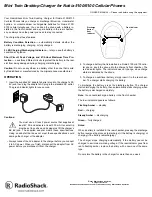
- 54 -
LGE Internal Use Only
Copyright © 2009 LG Electronics. Inc. All right reserved.
Only for training and service purposes
4. RF Circuit Technical Brief
GM310f service manual
4.2.2 GSM Transmitter
[Figure 4.2.2-1] GSM Transmitter Part Block Diagram
The GMSK transmitter supports power class 4 for GSM850 and GSM900 as well as power class 1 for
DCS1800 and PCS1900. The digital transmitter architecture is based on a very low power fractional-N
Sigma-Delta synthesizer without any external components (see [Figure 4.2.2-1]). The analog I/Q
modulation data from the baseband is converted to digital, filtered and transformed to polar
coordinates. The phase/frequency signal is further on processed by the Sigma-Delta modulation loop.
The output of its associated VCO is divided by four or two, respectively, and connected via an output
buffer to the appropriate single ended output pin. This configuration ensures minimum noise level.
The 8PSK transmitter supports power class E2 for GSM850 and GSM900 as well as for DCS1800 and
PCS1900. The digital transmitter architecture is based on a polar modulation architecture, where the
analog modulation data (rectangular I/Q coordinates) is converted to digital data stream and is
subsequently transformed to polar coordinates by means of a CORDIC algorithm. The resulting
amplitude information is fed into a digital multiplier for power ramping and level control. The ready
processed amplitude signal is applied to a DAC followed by a low pass filter which reconstructs the
analog amplitude information. The phase signal from the CORDIC is applied to the Sigma-Delta
fractional-N modulation loop. The divided output of its associated VCO is fed to a highly linear
amplitude modulator, recombining amplitude and phase information. The output of the amplitude
modulator is connected to a single ended output RF PGA for digitally setting the wanted transmit
power.
The PA interface of SMARTi 3GE supports direct control of standard dual mode power amplifiers
(PA’s) which usually have a power control input VAPC and an optional bias control pin VBIAS for
efficiency enhancement. In GMSK mode, the PA is in saturated high efficiency mode and is controlled
via its VAPC pin directly by the baseband ramping DAC. In this way both up- / down-ramping and
output power level are set. In 8PSK mode, the ramping functionality is assured by an on-chip ramping
generator, whereas output power is controlled by the PGA’s as described above.
















































